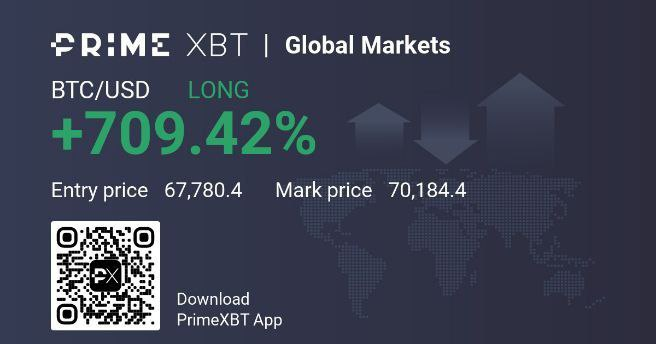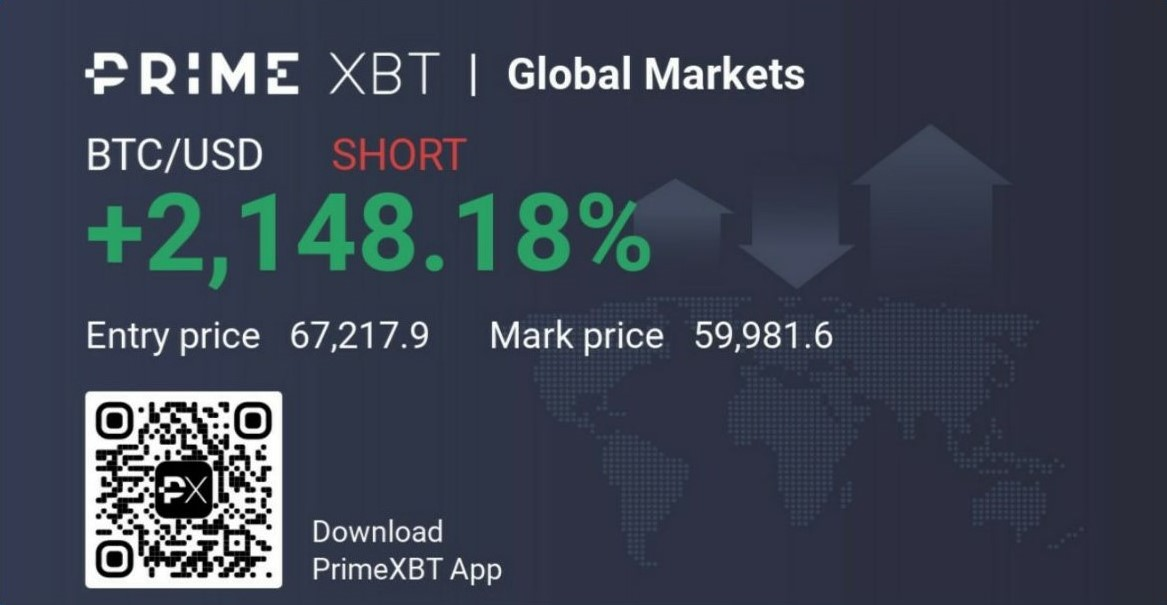The world of trading and Cryptocurrencies can be exciting, and the potential for high returns certainly adds to the thrill. But what if there was a way to potentially boost your gains? Leverage trading in Crypto offers a way to do just that. It allows you to control a larger investment in the market by using borrowed funds from a broker.
Imagine you have a set amount of money to invest in a particular Cryptocurrency. With traditional trading, you’d purchase what your budget allows. Leverage trading, however, is like getting a loan from a friend to buy more. This can be appealing if you believe the price of the Crypto will rise.
However, it’s important to remember that leverage is a double-edged sword. While it can amplify your profits, it can also significantly magnify your losses. Before diving into leverage trading, it’s crucial to understand the risks involved.
Key takeaways
- Leverage trading lets you control a larger position in the Crypto market by borrowing funds using margin.
- It has the potential to significantly increase your profits but also comes with the risk of larger losses.
- Profits can be made from an increase in an asset’s price (long trade) and from a decrease in an asset’s price (short trade).
Throughout this article, we’ll explore the mechanics of leverage trading and how it works in the Crypto world. But first, let’s solidify these key concepts before moving on.
Fundamentals of Crypto leverage trading
This section will unveil the mechanics behind leverage trading and how it applies to the exciting world of Cryptocurrencies. Here, we’ll explore key concepts like leverage ratios, margin, and their impact on your trading experience.
What is leverage?
Let’s break down the concept of leverage. It’s similar to using a lever, a simple tool that amplifies the force you exert. But here, it’s applied to finances. Leverage is expressed as a ratio, like 5x or 10x. 5x leverage means you can control a leveraged position five times larger than your initial investment. So, with $1,000 and 5x leverage, you could control a position with a $5,000 notional value.
How does leverage work?
Here’s a simplified example of how leverage translates to Crypto trading:
- You believe Bitcoin’s price will rise.
- You have a $1,000 margin position and decide to use 5x leverage with a Crypto broker.
- The exchange lends you an additional $4,000, bringing your total position to $5,000 worth of Bitcoin.
- If Bitcoin’s price increases by 10%, your $5,000 leveraged position would be worth $5,500. You’d make a profit of $500 (excluding any fees).
However, if the price of Bitcoin falls by 10%, your $5,000 position would be worth $4,500. In this scenario, you’d experience a loss of $500 (excluding fees). This is where the concept of margin comes into play.
Leverage ratios and their implications
Crypto exchanges offer varying leverage ratios when trading Futures. For instance, 10x leverage allows for even more significant gains compared to 5x leverage. However, it also comes with a higher risk of liquidation due to increased volatility.
Traders should understand the impact of leverage ratios on their potential profits, losses, and liquidation risk. We’ll delve deeper into these implications in the next section.
Types of trades in Crypto leverage trading
In the world of Crypto leverage trading and margin trading, you can use two main approaches to capitalise on price movements, long trades and short trades.
Long trades

Entering a long position with leverage essentially means a trader anticipates a Cryptocurrency’s price to increase. Buy low, sell high. Here’s how it works:
- You believe the price of a particular Crypto (e.g., Bitcoin) will go up in the future.
- You enter a long position by using leverage from a Crypto exchange to magnify your potential gains.
- By using leverage, you gain access to more funds than your initial investment.
- If your prediction is correct and the price rises, you profit from the difference between your buying price and the selling price.
Leverage amplifies your profits. Imagine you buy $1,000 worth of Bitcoin without leverage. If the price increases by 10%, you’d make a profit of $100. However, with 5x leverage and a $1,000 investment, you could control a $5,000 position. In this scenario, a 10% price increase would yield a $500 profit.
Short trades

Short positions with allows you to profit from a Cryptocurrency’s price decline. Sell high, buy low. Here’s a breakdown of the concept:
- You believe the price of a particular Crypto will decrease.
- You borrow the Crypto asset from the exchange using margin.
- You immediately sell the borrowed Crypto at the current market price.
- Later, you close out the trade position by repurchasing the same amount of Crypto. Hopefully at a lower price.
- If your leveraged trades are correct and the asset price falls, you pocket the difference between the selling price and the repurchase price.
Leverage amplifies your profits in short selling. Similar to long trades, leverage magnifies your gains. Let’s say you use $1,000 of margin to borrow and sell $5,000 worth of Bitcoin futures using 5x leverage. If the price falls by 10%, you can repurchase it back for $4500 and return it to the exchange. Your profit would be $500 (excluding fees) on your initial $1,000 margin investment.
Risks and advantages of Crypto leverage trading
Leverage trading Crypto presents a higher level of risk and reward. While it offers the allure of magnified profits, it also comes with amplified risks. Let’s explore both sides of the coin.
Amplified profits

The core appeal of margin trading lies in its ability to significantly increase your potential gains. Here’s how it works:
- By using borrowed funds to control larger positions, you can magnify your returns if the traded assets move in your favour.
- In the case of buying $1,000 worth of Bitcoin futures without leverage. If the price increases by 10%, you make a $100 profit.
- With 5x leverage and a $1,000 investment, you could control a $5,000 position. In this scenario, the same 10% increase translates to a $500 profit.
This potential for amplified profits is what entices many investors to use leverage across Bitcoin Futures and other assets.
Increased risks
However, with the potential for magnified gains, your margin balance is also subject to magnified losses. Leverage can lead to leveraged positions being completely liquidated if the market moves against your position.
Liquidation occurs when the value of your position falls below the minimum margin requirement set by the exchange.
In essence, if your losses exceed the amount of your initial investment (the margin), the exchange will automatically sell your holding to recoup the money they loaned you.
This is why it’s crucial to understand the heightened risk of liquidation associated with margin trading.
Managing risks in leverage trading
While margin trading carries inherent risks, there are steps you can take to mitigate them:
- Start small: begin with a small trade size to get comfortable with leverage and Crypto market volatility before risking larger amounts.
- Stop-loss orders: use stop-loss orders to automatically exit your position when prices reach a predefined level. This helps limit the potential for losses if the market turns against you.
- Maintain a healthy margin: always maintain a sufficient margin level to avoid liquidation. The exchange will typically notify traders when the margin value approaches a critical threshold.
- Practice with demo accounts: consider using a demo account or contest module offered by some crypto exchanges, like PrimeXBT. This allows investors to practice margin trading with simulated funds and gain experience before venturing into real-world markets.
By employing these risk management strategies, you can approach Bitcoin options or any leveraged trades or Futures contract with a more informed and cautious perspective.
Choosing the right leverage ratio
Selecting an appropriate leverage ratio for margin trading is similar to choosing the right climbing gear for a mountain climbing adventure; it significantly impacts your journey. Here, we’ll explore some key factors to consider when making this critical decision for your crypto leverage trading strategy.
- Are you a seasoned trader comfortable with high stakes, or are you a beginner still navigating the Crypto trading landscape? Your experience level and risk tolerance are fundamental.
When trading Crypto as a beginner, investors should generally opt for lower leverage ratios to minimise potential losses while they gain experience. Conversely, experienced traders with a higher tolerance for risk might consider using higher leverage to potentially amplify their gains.
- Not all Cryptocurrencies are created equal. Some, like Bitcoin, exhibit lower volatility compared to newer altcoins. The more volatile the Cryptocurrency you’re trading, the more cautious you should be when margin trading.
Higher leverage on a volatile asset significantly increases the risk of liquidation, even with minor price fluctuations.
Overall trading strategy: your leverage selection should complement your overall trading strategy. Are you planning short-term swing trades or long-term investments? Short-term strategies might use higher leverage to capitalise on quick price movements, while long-term strategies might favour lower leverage for a more measured approach to earning money.
Leveraged trading instruments
Now let’s dive into the various instruments used for leverage trading in the Crypto realm. We’ll explore the key differences between spot trading and derivatives trading, along with the concept of leveraged tokens.
Spot vs. derivatives trading
In the world of Cryptocurrency, there are two main avenues to Crypto trading: spot trading and derivatives trading.
- Spot trading: here, you directly trade Crypto such as Bitcoin or Ethereum on various spot markets. While some spot trading platforms may offer limited leverage and margin options, it’s generally not the primary method for margin trading due to its lower leverage ratios.
- Derivatives trading: this approach involves contracts derived from the underlying prices of a Cryptocurrency, rather than the actual asset itself. Derivatives, such as Futures contracts, offer significantly higher leverage ratios compared to spot trading. This allows for magnified potential profits (or losses) on your trades.
Leverage and futures contracts: some Crypto exchanges enable margin trading through Futures contracts. These derivatives contracts lock in an agreement to buy or sell a Cryptocurrency at a specific price on a predetermined future date.
By trading a futures contract, traders can control a larger position size than their initial investment, amplifying potential returns.
Leveraged tokens
Another instrument gaining traction in derivatives markets is the concept of leveraged tokens. These tokens are designed to provide traders with magnified exposure to price movements of various assets, either upwards or downwards.
There are different types of leveraged tokens, but generally, they aim to deliver a return that is a multiple of the underlying asset’s performance over a specific period. For example, a 2x Bitcoin token would offer traders 2x the volatility and exposure to movements in Bitcoin value.
It’s important to understand the inherent risks associated with leveraged tokens before using them, as they can be complex instruments.
Practical examples of leverage trading
The world of margin trading is a battlefield where both triumphs and tribulations can unfold. Let’s delve into illustrative examples of successful leverage trades and cautionary tales to gain valuable insights.
Successful leverage trades
Picture a trader that believes Bitcoin’s price is poised for a surge. They conduct thorough market research such as technical analysis, identify favourable technical indicators, and choose a suitable leverage ratio based on their risk tolerance. They employ a long trade strategy with leverage, essentially placing a magnified bet on Bitcoin’s price increase.
Here’s where effective risk management comes into play. The trader uses stop-loss orders to automatically exit the position if the price falls below a predetermined threshold, limiting potential losses. By carefully managing their risk and capitalising on a well-timed market move, the trader manages the power of leverage to achieve a profitable outcome.
This example underscores the importance of:
- Market understanding: conducting thorough market research and analysis is crucial before initiating any leverage trade.
- Strategic planning: developing a clear trading plan that incorporates leverage, entry and exit points, and risk management strategies is essential.
- Risk management: using stop-loss orders and maintaining a healthy margin level are fundamental practices to mitigate potential losses.
Remember, these are simplified scenarios. Real-world leverage trading may involve more complex market dynamics.
Cautionary tales
Now, let’s consider a contrasting scenario where a trader, fueled by FOMO (fear of missing out), rushes into trade positions without proper planning or use of any technical analysis. They might choose to trade Crypto with an excessively high leverage ratio based on emotions rather than a calculated strategy. This could lead to significant potential losses if the market moves against their position.
Furthermore, traders should be aware that neglecting risk management practices like stop-loss orders can worsen the situation. The trader might hold onto a losing position for too long, hoping for a reversal that never happens, ultimately resulting in a substantial loss to their account balance or even complete liquidation of their investment.
This cautionary tale highlights the critical importance of:
- Understanding risks: fully comprehending the amplified risks associated with margin trading is paramount.
- Emotional control: trading decisions should be based on logic and strategy, not emotions like FOMO.
- Risk management: implementing stop-loss orders and maintaining a healthy margin level are essential safeguards.
By learning from both successful trades and cautionary tales, you can approach leverage trading with a more informed and risk-averse perspective.
How to start Bitcoin leverage trading
Intrigued by the potential of leverage trading Bitcoin? This section will guide you through the initial steps to get you started on PrimeXBT, a leader in the world of margin trading.
Registering with PrimeXBT
Creating an account with PrimeXBT is a quick and straightforward process. The platform boasts a user-friendly interface with low fees, advanced trading tools, and a streamlined registration procedure. Here’s a quick overview:
- Visit the PrimeXBT website and navigate to the signup page.
- Provide some basic information, including your email address and creating an account password.
- You’ll receive an email from PrimeXBT within a few seconds. Your registration will be complete once you click to verify your email address.
Once registered, you’ll be able to explore the various features, tools, and functionalities offered by PrimeXBT, including exposure to margin trading for Bitcoin and other Cryptocurrencies. One of the platform’s attractive features is its competitive fee structure. Low fees and easy deposit options makes it a cost-effective choice to begin margin trading.
Developing a leverage trading plan
Jumping into margin trading without a plan is like venturing into a battlefield unarmed. Here’s where strategic planning comes into play:
Crafting a clear and comprehensive trading plan is crucial for maximising your success and minimising risks. This plan should encompass several key elements:
Define clear entry and exit points for your trades. This involves using tools to help identify technical indicators or price levels that signal when to enter and exit a position.
Risk management is important in leverage trading. Use stop-loss orders to automatically exit your position if the market moves against you, limiting potential losses. Additionally, maintain a healthy margin level to avoid getting liquidated.
Understand your risk tolerance and capital allocation. Be honest with yourself about your risk tolerance. Leverage trading amplifies both profits and losses. Allocate only a portion of your capital that you can afford to lose, and never risk your entire investment.
Conclusion
The world of Crypto leverage trading presents a captivating yet complex landscape for traders. By strategically using margin, you can potentially magnify your returns in a rising market. However, it’s crucial to remember that this power comes with amplified risks, leverage can also exacerbate losses if the market moves against you.
This guide has unpacked the fundamentals of leverage trading in Crypto, exploring key concepts like leverage ratios, margin, and different trade types such as futures and derivatives. We’ve also highlighted the importance of developing a well-defined trading plan that incorporates risk management strategies.
Remember, margin trading is not suitable for everyone. It’s imperative to conduct thorough research, understand the inherent risks involved, and only invest capital you can afford to lose.
Fortunately, many platforms like PrimeXBT offer educational resources and tools to help users gain a deeper understanding of leverage trading. By leveraging these resources (pun intended) and approaching the market with a cautious and informed perspective, you can navigate the exciting realm of Crypto leverage trading with more confidence.
What is leverage Crypto trading?
Leverage trading in Crypto allows you to control a larger investment position in the market by borrowing funds from a broker, essentially magnifying your buying power. This can amplify your potential profits, but also magnifies potential losses
What leverage ratio is best in Cryptocurrency trading?
There's no one-size-fits-all answer for the best leverage ratio in Cryptocurrency. It depends on your individual risk tolerance and experience level. Beginners should generally opt for lower leverage ratios to minimise potential losses, while experienced traders with a higher tolerance for risk might consider using higher leverage to potentially amplify their gains.


